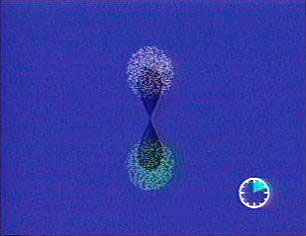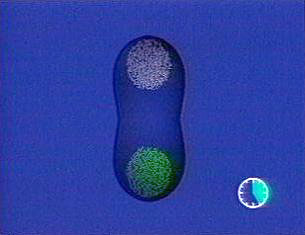Spacetime Engineering Movie

Colliding Black Holes
Stuart L. Shapiro, University of Illinois at Urbana-Champaign
Saul A. Teukolsky, Cornell University
Two identical, spherical clusters begin moving towards each other. They separately collapse to black holes, but the event horizons that form are extremely elongated due to the tidal field of the companion cluster. Eventually, these black holes merge, and the combined event horizon soon relaxes from a highly distorted configuration into a spherical one. The clusters each have a radius of 0.8 M and are separated initially by a distance of 2.8 M. They are moving towards each other at 15% of the speed of light when the simulation begins.

Download Quicktime (4.4 MB)
Here, each cluster collapses separately to a black hole with a distorted event horizon.

Download Quicktime (12.3 MB)
Here, the black holes merge and the horizon becomes spherical. The very dark shaded region that arises at late time inside the event horizon (the lightly shaded outer region) shows the common apparent horizon. Two disjoint apparent horizons also form around the individual clusters and these are also shown by dark shading. The event and common apparent horizons eventually coincide.
last modified 3 Nov 14 by aakhan3

